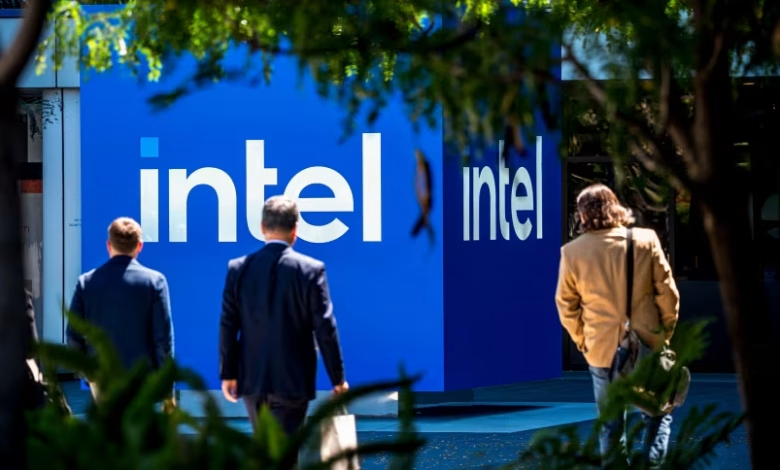
US Takes Historic 10% Ownership in Intel Amid Tech Push
The United States government has made its biggest intervention in a private company since 2008 by taking a 10% stake in Intel as part of Trump’s tech initiative. A groundbreaking $8.9 billion deal allows the government to acquire 433.3 million shares of Intel common stock at $20.47 per share. The government now ranks among Intel’s largest shareholders. This remarkable investment gives the government nearly 10% ownership in the California-based semiconductor giant, which currently has a market value of just over $100 billion.
Intel’s stock responded positively to the news as shares jumped more than 5%. The investment combines $5.7 billion in grants from the 2022 U.S. CHIPS and Science Act with $3.2 billion from a program called Secure Enclave. The government won’t take a board seat or have other governance rights at Intel, despite its substantial financial stake. This milestone shapes Intel’s daily coverage as the company navigates challenges and opportunities in the evolving global semiconductor market.
What Motivated the U.S. to Take a Stake in Intel?
The U.S. government has taken an unprecedented stake in Intel. National security concerns drove this strategic investment as America grows anxious about its vulnerable semiconductor supply chains.
National security concerns over chip supply chains
America’s semiconductor ecosystem shows critical vulnerability in economic stability and defense capabilities. East Asia, mainly Taiwan, produces over 70% of global semiconductors. This manufacturing concentration directly threatens U.S. military systems that need advanced chips. F-35 fighter jets, hypersonic weapons, and satellite systems all depend on these chips. The U.S. holds just 10-12% of global manufacturing capacity but commands 46% of total semiconductor sales. These numbers show a dramatic imbalance in the global supply chain.
Desire to reduce reliance on foreign semiconductor production
U.S. government officials see Intel as a strategic asset that can rebuild advanced manufacturing capacity at home. Intel’s challenges represent more than corporate issues – they signal a national security concern that needs direct intervention. The U.S. lacks the ability to produce the most advanced 7nm and 5nm chips onshore. These chips power innovative AI applications and defense systems. This reliance on foreign suppliers creates substantial risks to national security and supply chain stability, especially with rising tensions in the Taiwan Strait.
Trump’s broader AI and tech dominance agenda
Trump’s focus on U.S. chip manufacturing matches his steadfast dedication to “America’s dominance in artificial intelligence while deepening their commitment to national security”. This investment shows the administration wants to ensure American leadership in semiconductors. These chips are the foundations of every AI technology and cloud platform. On top of that, it helps counter China’s state-supported semiconductor push through its “Made in China 2025” initiative. China wants 70% self-sufficiency in semiconductors. This investment fits Trump’s broader industrial policy that includes potential tariffs on imported chips and restrictions on technology exports.
Today’s Intel stock news shows investors recognize this unprecedented government support. This backing could give Intel room to refresh its foundry business and serve both commercial markets and critical national security interests.
How Was the Intel Deal Structured and Funded?
The U.S. government and Intel have struck a groundbreaking deal that changes previously allocated grants into direct equity. This creates the most important public stake in one of America’s leading chipmakers.
Breakdown of $8.9B investment from CHIPS and Secure Enclave
The U.S. government has invested $8.90 billion in Intel common stock, which shows a transformation in federal funding deployment. The money comes from two sources: $5.70 billion in unpaid grants under the U.S. CHIPS and Science Act and $3.20 billion from the Defense Department’s Secure Enclave program. Intel has already received $2.20 billion in CHIPS grants, which brings the government’s total investment to $11.10 billion.
Government receives 433.3 million shares at $20.47 each
The agreement lets the government buy 433.3 million primary shares of Intel common stock at $20.47 per share. The price shows a $4.00 discount from Intel’s closing share price of $24.80 before the announcement. This 9.9% stake makes the federal government one of Intel’s biggest shareholders. The intel stock news showed market optimism about this unprecedented deal.
No governance rights or board representation
The government will hold a passive ownership position despite its large stake. They won’t have Board representation or other governance rights at Intel. The government has agreed to vote alongside the company’s Board of Directors on shareholder approval matters, with “limited exceptions” not detailed in public announcements. Commerce Secretary Howard Lutnick made the arrangement clear: “It’s not governance, we’re just converting what was a grant under Biden into equity. Non-voting”.
This fresh investment approach differs from traditional grant-based funding, and intel stocks today show how the market views this innovative public-private partnership.
How Does This Compare to Past Government Interventions?
Image Source: The Independent
The U.S. government’s involvement with Intel shows a major move in industrial policy. This deal stands out because it happened during economic stability, not during a crisis.
Parallels with 2008 GM bailout and MP Materials deal
The Intel investment mirrors previous government actions, but on a smaller scale. The government bought a 60.8% stake in General Motors for about $50 billion during the 2008 financial crisis and lost $11.2 billion after selling it. The Pentagon has taken a $400 million preferred equity stake in MP Materials, a rare earth producer. This deal set a precedent for investing in companies with strategic importance.
Differences in economic context and legal frameworks
The Intel situation is different from GM’s bailout. GM needed help to avoid collapse and save millions of jobs, while Intel faces challenges but remains stable. The deal’s structure also sets it apart. The government holds a passive, non-voting stake without board seats, unlike its active management of GM during restructuring. This setup gives taxpayers a chance to benefit through equity instead of grants.
Analyst views on passive vs. active government ownership
Expert opinions on this approach remain split. Geoffrey Gertz from the Center for a New American Security calls it “unusual” and sees risks of “crony capitalism”. Sujai Shivakumar at the Center for Strategic & International Studies takes a different view. He believes “Intel is more than just a company” and backs government involvement in strategic industries that affect national security.
What Could This Mean for Intel and the Market?
Image Source: Mashable
Intel’s collaboration with the federal government has transformed the semiconductor scene. This groundbreaking deal sends waves through markets and affects national interests.
Impact on intel stock and investor sentiment
Intel’s stock jumped 5.5% right after the announcement but dropped 1% in after-hours trading when investors looked closely at the terms. The company’s stock has grown about 23% so far in 2025. This investment shows strong faith in the company and could help calm worried shareholders, especially after Intel lost $18.8 billion in 2024—its first loss since 1986.
Possibility of Intel becoming ‘too big to fail’
The government’s stake makes Intel a protected strategic asset. Market experts can’t agree on what this means. Some say Intel has become “too big to fail”, while others worry about how this might complicate company decisions. This deal has turned Intel from “a conventional company” into “a corporate actor on the geopolitical stage”.
Future of U.S. chip manufacturing and global competition
Intel puts more than $100 billion into expanding its U.S. facilities. Their advanced Arizona plant should start full production this year. As America’s only company making cutting-edge logic chips at home, Intel’s success directly ties to the country’s goal of making 20% of the world’s advanced processors by 2030. All the same, big challenges exist as Intel finds it hard to get customers for its new factories.
The U.S. government’s stake in Intel represents a game-changing moment in American industrial policy. The federal government now owns part of a private company during stable economic times, instead of just giving grants. Their $8.9 billion investment shows real worry about America’s chip dependency, since East Asia makes more than 70% of the world’s semiconductors.
Trump’s team sees Intel as much more than just another company – it’s a vital piece of national security. This money also helps America’s bigger plan to lead the world in AI and cutting-edge technology.
The government bought almost 10% of Intel but keeps its distance, with no seats on the board or control over decisions. This hands-off approach makes the Intel deal quite different from the 2008 GM rescue, when the government stepped in to run things during the financial crisis.
The stock market likes what it sees, and Intel’s shares have gone up since the news broke. This deal makes the chipmaker too important to let fail, which helps as the company puts over $100 billion into new American factories.
Everything hangs in the balance now. America makes just 10-12% of the world’s semiconductors but accounts for 46% of sales – a risky gap that needs fixing. Intel’s success means more than just company profits. The company now sits at the crossroads of national security, economic power, and tech independence. This government-backed comeback plan is a calculated bet that American chip manufacturing can become great again in today’s competitive global world.





